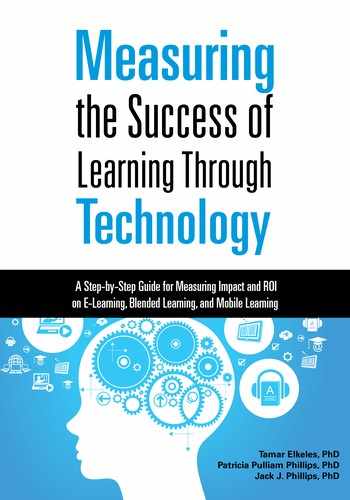Book Description
Learn to measure the results of your technology-based learning programs with this step-by-step guide.
Few would dispute the convenience, cost, and efficiency of learning through technology. Whether e-learning, blended learning, or mobile learning, it’s usually just in time, just enough, and just for the user. The challenge with e-learning lies in proving its value and showing the results. The cost savings and the outcome of the learning program must be considered to determine the true value of these programs. Renowned ROI experts Jack and Patti Phillips have joined with Tamar Elkeles, the chief learning officer for Qualcomm, to provide this guide for measuring the success of e-learning programs.
By following the steps prescribed in this book, designers and developers can significantly affect the success of e-learning at the application and impact levels, ultimately making the ROI easy to develop. Part I of the book outlines the steps that make up the logical approach to evaluation using the ROI Methodology. Part II describes how the methodology has been applied in real-life case studies. These studies represent a variety of industries and applications and are written by experienced professionals in the field of learning and development.
Table of Contents
- Cover
- Title Page
- Copyright
- Table of Contents
- Preface
- Acknowledgments
- Part I: The ROI Methodology: A Credible Approach to Evaluating Your Learning Through Technology Programs
- Part II: Evaluation in Action: Case Studies Describing the Evaluation of Learning Through Technology Programs
- Chapter 7 Measuring ROI in Work Engagement: A Blended Learning Solution
- Chapter 8 Measuring ROI in Sales Training: A Game-Based Program
- Chapter 9 Measuring ROI in a Sales Program: A Web-Based Learning Solution
- Chapter 10 Measuring ROI in an English-as-a-Second-Language Program: An Online Learning Solution
- Chapter 11 Measuring ROI in an Upgrade Selling Program: A Mobile Learning Solution
- Chapter 12 Measuring ROI in a Sales Program: An E-Learning Solutions
- About the ROI Institute
- Index
- About the Authors
